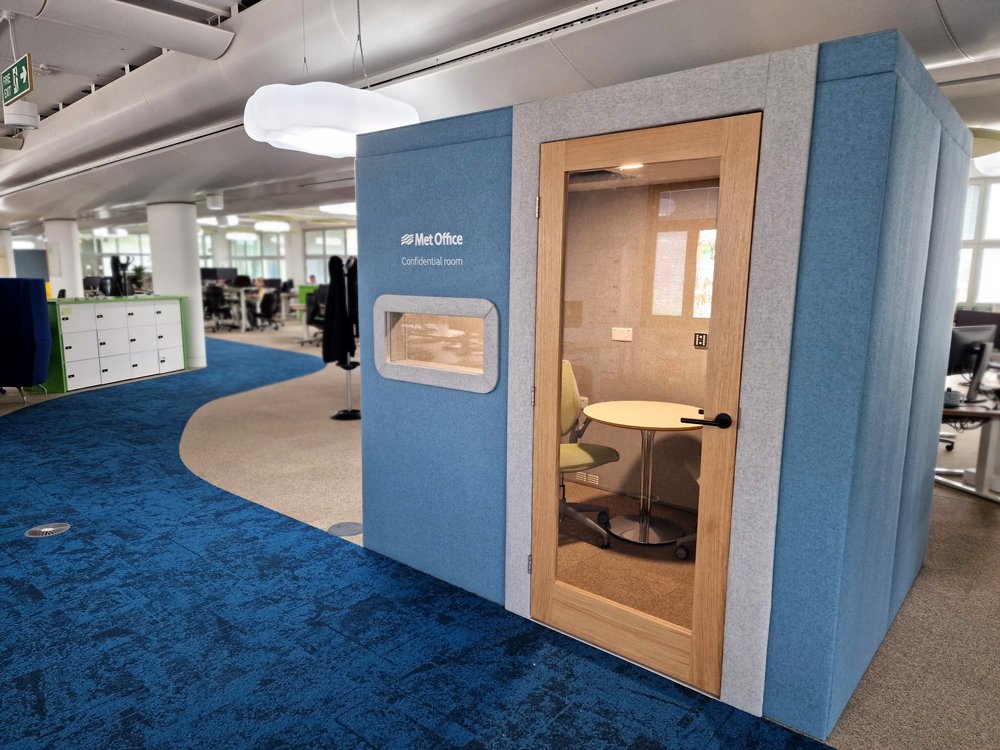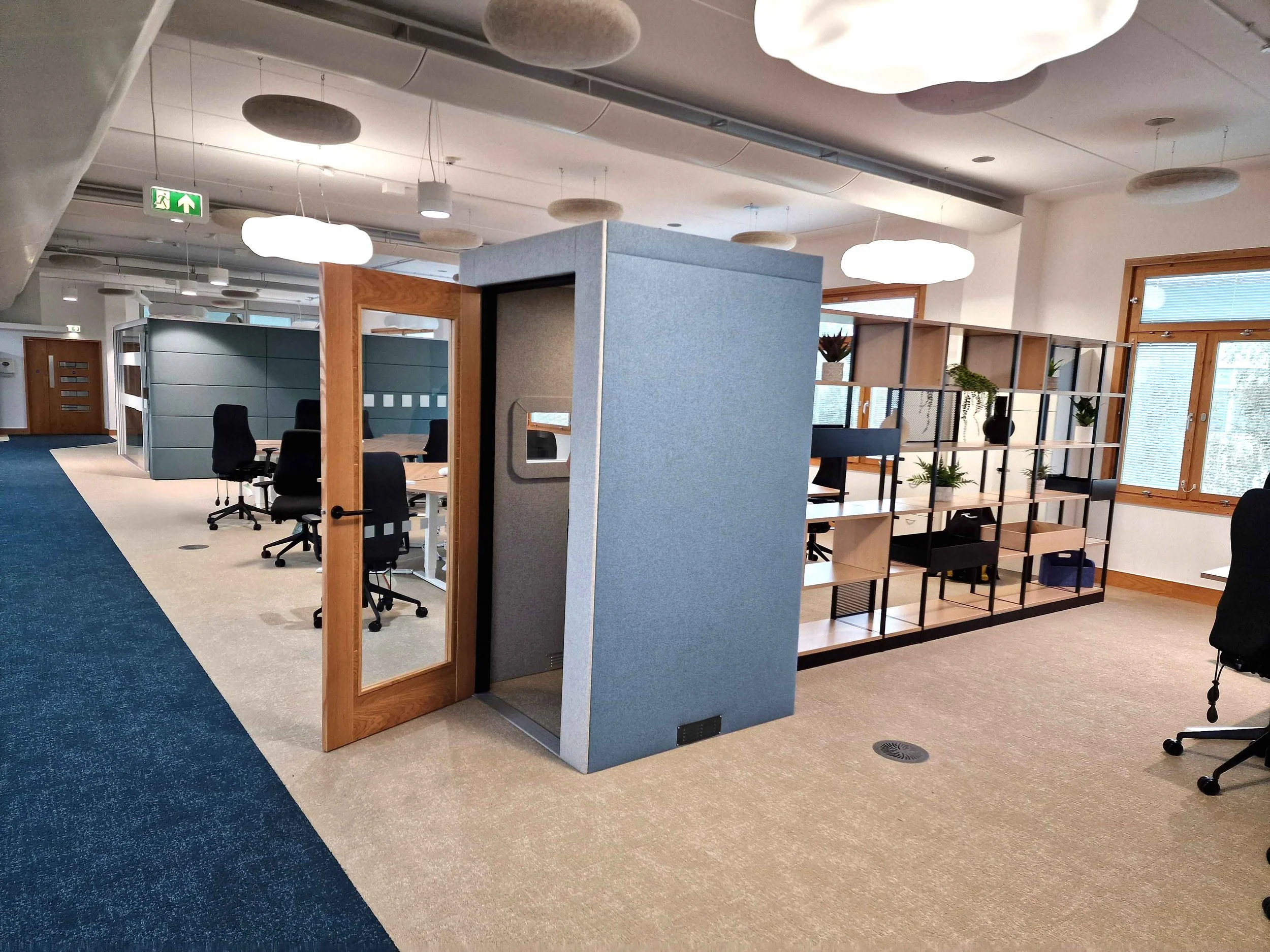Why CO₂ Levels Matter in Acoustic Pods
Creating comfortable, healthy, and productive spaces through smarter pod design
Date 25.07.2025 Author: Stuart Jones
In the drive to improve focus, privacy, and flexibility in open-plan offices, acoustic pods have become a go-to solution. These enclosed spaces offer an oasis of calm — shielding users from visual and auditory distractions. But while acoustics, lighting, and layout get plenty of attention, one factor is often overlooked: carbon dioxide (CO₂) levels.
And yet, CO₂ buildup can have a significant impact on user wellbeing, cognitive function, and overall pod performance.
What Happens When CO₂ Builds Up in a Pod?
Soundproof pods are, by design, enclosed spaces. Without proper ventilation, the air inside can quickly become stale — especially during longer meetings or calls. As people exhale, CO₂ levels rise. In small, sealed pods, this can happen surprisingly fast.
Elevated CO₂ levels have been shown to cause:
Drowsiness and fatigue
Reduced concentration and decision-making ability
Headaches and discomfort
A perception of stuffiness or poor air quality
Even levels as low as 1,000 ppm (parts per million) — which can occur in just 15–30 minutes in a poorly ventilated space — may impair cognitive performance.
Why It’s a Critical Design Consideration
Modern acoustic pods should be more than just soundproof enclosures. They need to support healthy, productive work. Ensuring adequate air quality is a key part of this.
Real-World Testing: Government Department Case Study
At AgileAcoustics, we’ve seen the effects of poor air quality firsthand. In fact, we’ve worked with a UK Government Department to carry out extensive in-pod CO₂ testing, using professional monitors to assess how quickly levels can rise—and how important it is to manage them.
Following this testing, we now install CO₂ monitors as standard in all of this client’s meeting booths. These sensors provide real-time feedback on air quality and help ensure users don’t remain in the pod beyond safe thresholds. It’s a simple yet powerful way to protect wellbeing and extend the usable session time of each booth.
Best Practices for Managing CO₂ in Acoustic Pods
Here are some design and operational strategies we recommend:
Active Ventilation Systems: Pods should incorporate discreet fans or mechanical ventilation to constantly refresh the air. Ideally, this system should run quietly so it doesn’t interfere with acoustic performance or distract the users.
Smart CO₂ Sensors: Some high-spec pods include CO₂ sensors that alert users or trigger increased airflow when levels exceed a healthy threshold (usually 800–1000 ppm).
User Awareness: Encourage users to take short breaks in between long meetings or calls. Even just opening the door between uses can help reset air quality.
Material Selection and Seals: Balance acoustic performance with breathability. While tight seals aid soundproofing, airflow gaps or integrated ventilation ensure the pod remains usable for longer durations.
It’s Not Just About Comfort — It’s About Performance
In today’s hybrid and high-performing workspaces, employees expect more than just quiet zones. They need environments that feel fresh, energising, and safe.
Ignoring air quality — and especially CO₂ buildup — risks undermining all the benefits that pods are designed to deliver. After all, what’s the point of a quiet pod if users emerge feeling groggy and unfocused?
Building Acoustic Pods with Air Quality in Mind
At AgileAcoustics, we’re committed to creating acoustic furniture that works for people. Our pods are designed with airflow in mind — using powered ventilation systems, breathable materials, and optional smart sensors to ensure CO₂ levels stay within healthy limits.
As pods become more common in workplaces, schools, and public settings, air quality will only grow in importance. By addressing CO₂ levels as part of the design — not an afterthought — we create spaces that truly support wellbeing, productivity, and comfort.




